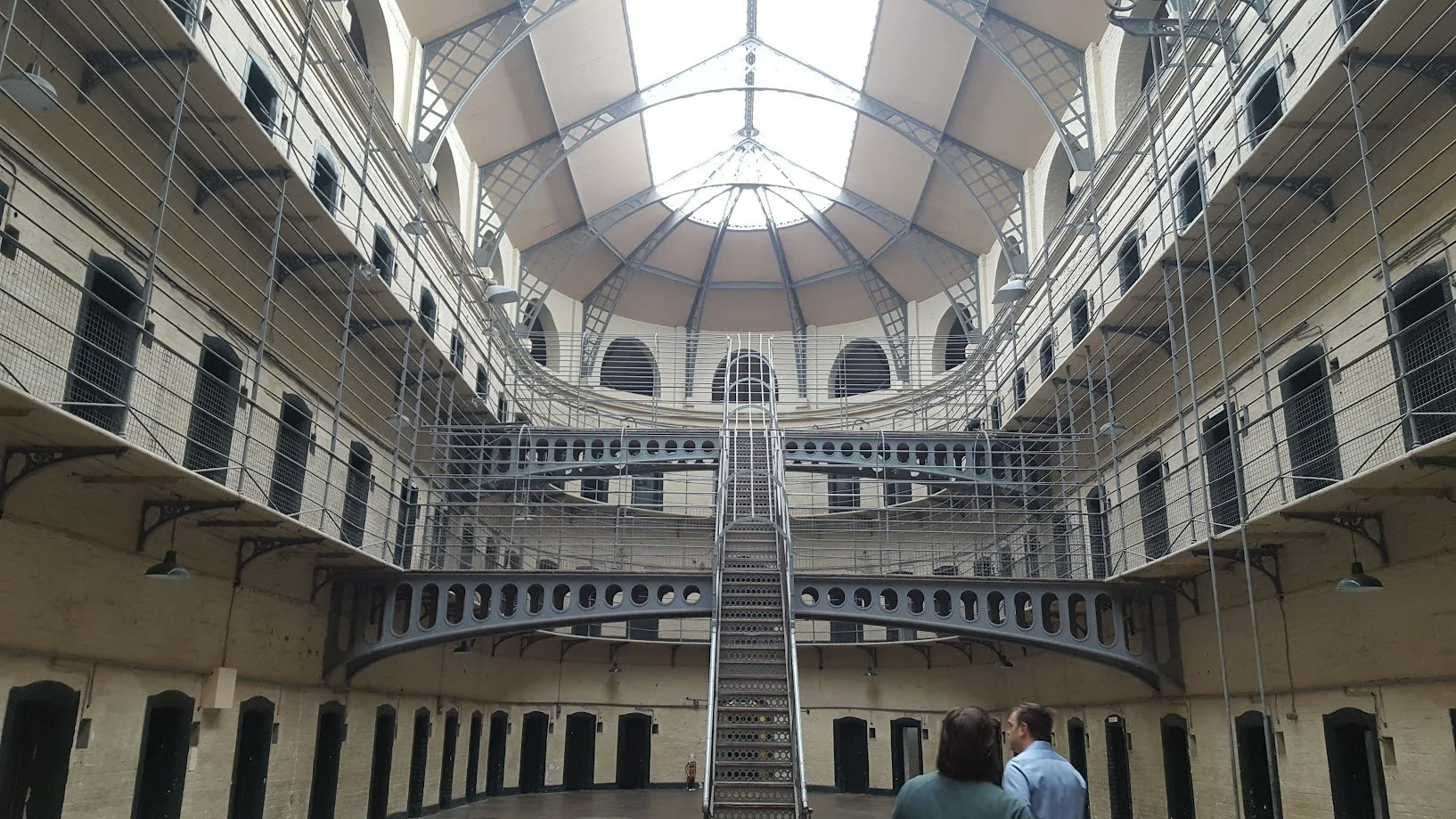Ireland - Dublin
Ha’penny Bridge at night
Overview
Dublin is cut in half by the River Liffey. The northern half of the city is traditionally more working-class and the southern half posher. Both halves of the city have plenty to offer, but most of the city’s primary sites are clustered around the river, mostly on the southern side. Today the city is an encapsulation of the change that has occurred in Ireland over the last 20 years, as it hosts a strong job market and vibrant population.
What I Did:
We stayed just south of the River Liffey - which runs through the city - between Temple Bar and Trinity College and spent about 2 days wandering the neighborhoods clustered around the city center.
Kilmainham Gaol
Neighborhoods/Areas
Temple Bar and Trinity
Temple Bar is Dublin’s most famous, and most visited neighborhood and the closest thing Ireland has to Times Square in New York. Just south of the River Liffey, it has bars, restaurants and shops, and borders the area surrounding Trinity College, which includes Grafton St, St. Stephen’s Green and a number of smaller shopping and dining locations.
Grafton Street
Pedestrian shopping street.
Merrion Square
Park surrounded by houses known for their colorful doors.
Attractions
Kilmainham Gaol
Former prison that has held many Irish revolutionaries through the years and is now a museum.
Phoenix Park
Dublin’s largest urban park
Guinness Storehouse
More a museum than a brewery, the Guinness Storehouse tells the history of the brewery and the beer through engaging displays, and finishes at the top of the building in the Gravity Bar, which offers sweeping views of the city and surrounding hills.
Jameson Distillery
Distillery tour and museum
Christ Church Cathedral & St. Patrick’s Cathedral
Cathedrals dating back to the 11th and 12th centuries. At one point, both were Roman Catholic, but Christ Church is now denominated with the Church of Ireland. Christ Church has a crypt and St. Patrick’s boasts about it’s most famous former Dean, the author and satirist Jonathan Swift.
St. Stephen’s Green
City park with walking paths, ponds, trees and memorials.
Trinity College & the Book of Kells
The premier college in the country has a beautiful campus to walk through and the medieval Book of Kells manuscript on display
O’Connell Street & the GPO
The headquarters of Ireland’s Easter Rising in 1916, the General Post Office (or GPO) still has some bullet holes and other evidence of that momentous time in Irish history. Additionally, in the garden level of the building – which is still a functioning post office – you can see a small museum on the conflict and its aftermath.
Shelbourne Hotel
Historic hotel where the Constitution of the Irish Free State was drafted.
Merrion Square
Getting Around
Most of Dublin’s primary sites and attractions are within a 2 mile x 1 mile area, which makes it very walkable. If you want to get around to those attractions more quickly, there are a few bus tour options, bike shares and a small light rail network – although that is primarily built to serve commuters and residents of the neighboring towns.


